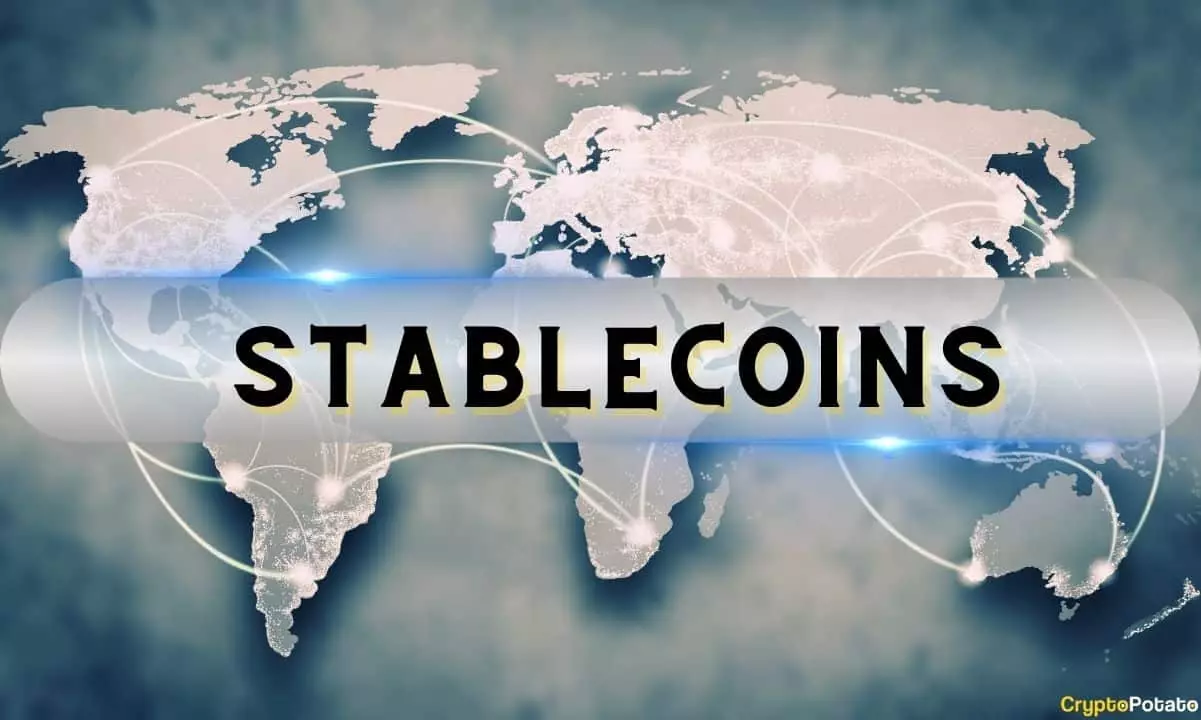The years 2024 to 2025 heralded an extraordinary period for the fiat-backed stablecoin market, witnessing an astonishing surge of over 76%, amassing a staggering $224.9 billion in total value. Amid this boom, it should be concerning to observe how this wealth was far from evenly distributed. The giants in the ring—USDT and USDC—commanded an overwhelming share, controlling 93.5% of the market. This stark concentration of power in just two entities raises critical questions about the fairness and competition in a market that purports to champion decentralization and innovation.
For newcomers like Ethena’s USDtb and Usual’s USD0, the race might seem promising on paper; however, the disproportionate grasp of a mere duo of dominant players puts immense pressure on these fledgling entrants. While the expansion of the stablecoin sector signifies a growing acceptance of digital currencies, the numerical superiority of USDT and USDC means that their market decisions will largely dictate the broader landscape, stunting the potential for genuine competition and, ultimately, innovation. It raises the uncomfortable yet essential question: What does democratization truly mean when monopolistic tendencies loom large?
The Struggles of Traditional Finance-Backed Coins
To further complicate matters, the dismal performance of traditional finance-backed stablecoins like PayPal’s PYUSD and SocGen’s EURCV illuminates the uphill battle legacy financial institutions face in attempting to infiltrate a market dominated by crypto-native players. Despite wielding immense brand recognition and ostensibly aligning with regulatory standards, these coins have not enjoyed significant traction in a realm where the likes of Tether and Circle have already established their empires. Their sluggish adoption rates serve as a stark reminder that in finance, as in life, familiarity does not guarantee relevance.
The limited utility of these stablecoins hints at a deeper issue—there exists a disconnect between traditional financial models and the dynamic, evolving demands of crypto consumers. Consumers are leaning towards decentralized alternatives that promise not only privacy but also innovative features that institutions simply cannot match. The failure of these traditional entrants suggests that the financial legacy of the past will struggle to remain relevant in an era increasingly defined by digital-first, decentralized philosophies.
Commodity-Backed Tokens: A Minor Player on the Stage
Interestingly, the market for commodity-backed tokens surged by a respectable 67.8% during the same timeframe, adding $773.9 million and achieving a market cap of $1.9 billion. However, despite this promising figure, it remains a fraction—just 0.8%—of the total fiat-backed stablecoin market. The inertia in this segment reveals a stark contrast to the soaring growth of fiat-backed coins, casting a shadow on commodity tokens that, despite leveraging the allure of gold amid economic uncertainty, are struggling to gain a mainstream foothold.
The dominance of Tether Gold (XAUT) and PAX Gold (PAXG)—which together command 84% of the commodity-backed market—only underscores the challenges this sector faces in offering distinct value propositions. Furthermore, the lack of corresponding token issuance signals a troubling stagnation in demand for tokenized commodities; it suggests that the appreciation of these assets may not translate into a broader acceptance or integration into the digital economy. The challenges are twofold: the sector must tackle the perception of stability versus the volatility inherent in the crypto space while also convincing users of the tangible benefits these tokens can provide.
The Tokenized Treasury Market’s Remarkable Ascent
In a startling twist, the tokenized treasury market experienced exponential growth, achieving a staggering market cap of $5.6 billion in April 2025—an impressive 544.8% increase from the previous year. This remarkable performance was spurred significantly by the imposition of considerable trade tariffs in March, driving investors toward safer assets.
The rapid ascension of BlackRock’s BUIDL token, which quickly captivated 44% of this burgeoning market, offers a glimmer of hope amidst caution. Nevertheless, the glaring discrepancy between this meteoric growth and the narrow user participation reveals a cautionary tale: while the potential for digital assets flourishes, genuine engagement remains limited. With tokenized treasuries dispersed across only 11,000 on-chain addresses, this highlights a critical absence of widespread adoption. If digital assets are to break free from their current confines, greater efforts towards inclusivity and education are imperative for empowering users and fostering trust in this new financial paradigm.


Leave a Reply